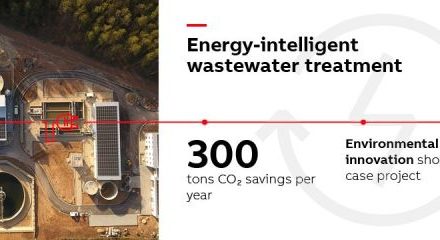They exceed the energy-efficiency requirements in the Building Regulations and the performance requirements defined in BS 6375 Parts 1 and 2, relating to weather tightness, operation and strength characteristics.
Our members offer windows with A+ to C Window Energy Ratings and with whole window U-values down to under 0.8, Passivhaus standard.
The energy-efficiency of a window is measured in two ways: U-values and Window Energy Ratings (WERs).
U-values are a simple measurement of the rate of heat loss through a material and are expressed in W/m2K (Watts per square metre per degree (Kelvin), with lower values indicating greater efficiency.
‘Whole window’ U-values, which measure the heat loss through the whole window, are the most accurate way of expressing this. Some manufacturers may quote ‘centre pane’ U-values, a measurement of the rate of heat loss through the glass alone that will show a lower figure.
Some manufacturers have had their windows tested by the British Fenestration Rating Council (BFRC). In this method, a window’s energy rating (WER) is determined by a formula that takes into account the total solar heat transmittance (heat gain) of the glass (usually referred to as ‘Gvalue’), the U-value of the window (the window frame and glass combined) and air leakage through the window seals. Currently the ratings range from a best of A+ to G.
In the UK, the energy-efficiency requirements of Building Regulations are set out in Part L, Conservation of fuel and power, revised in 2013. Part L1A (new dwellings) gives a target value U-value of 1.4 W/m2K and a minimum requirement of 2.0 W/m2K.
Part L1B (existing dwellings) requires U-values of 1.6 W/m2K or lower. Part L2A (new non-domestic) gives a target value U-value of 1.6 W/m2K and a minimum requirement of 2.2 W/m2K. Part L2B (existing non-domestic) requires U-values of 1.8 W/m2K or lower. Requirements in Scotland are broadly similar, but can differ in detail.
The most significant factor affecting energy performance is the specification of the glass. Selecting the correct composition of the double or triple-glazed unit, sometimes referred to as the IGU (insulating glass unit), is crucial. The glass can be specified to maximize solar gain, or to control it, as well as to minimize noise transmission, self-clean and provide additional safety. The choice of glass, the spacing between the panes and the gas used in the unit, all affect the energy values and window energy ratings.
Double or triple-glazing? For most needs double-glazing, especially in conjunction with an inert gas, such as Argon, lowemissivity glass for the outer pane and warm edge spacers, offers the best value option. However, if you want to achieve U-values below 1.4, or if you are building to Passivhaus standards, you will need to invest in triple-glazing. Bear in mind that tripleglazing is likely to reduce solar gain.
The size of the gap between the sheets of glass in a double-glazed unit affects both thermal and acoustic efficiency. The optimum gap is 16mm. As the standard glass thickness is 4mm, an IGU will be 24mm thick. A 20mm gap is often used. Narrow cavity units are available, offering improved energy efficiency over single-glazing, but standard units are less expensive, more durable and more efficient. See our Narrow Cavity Advice Note.
Low-emissivity glass (or low-e glass) has an invisible coating that reduces heat transfer and reflects interior heat back into the room. Low-e glazing units can be over twice as energy-efficient as older double-glazing with no low-e coating.
Solar control glass allows sunlight to pass through a window or façade while radiating and reflecting away a large degree of the sun’s heat. The indoor
space stays bright and much cooler than with normal glass.
The air in the cavity between the glass panes is now increasingly replaced by an inert gas, such as Argon. Argon filled units are around 5% more
expensive but can improve a double-glazed unit’s energy-efficiency by as much as 30%. Krypton and Xenon are more efficient still, but more expensive.
Warm edge spacers Spacer bars – the continuous frame between the glass panes – can be made of aluminium, but it is now the norm to use warm edge spacers, which can make a significant contribution to the window’s energy-efficiency.
in delivering energy efficiency. However, there are small differences in the thermal conductivities of the most common frame materials (table 1). Softwood is a slightly better thermal insulator than other materials, reducing the risk of ‘cold-bridging’. Wood’s strength also makes it more suitable for triple-glazed windows.
However energy-efficient your window and doors, they won’t keep the cold out unless installed properly. The junction with the wall is crucial. Most members will arrange to have your windows installed by trained fitters. For more information see our Installation Advice Note.
The WWA recommends that specifiers should evaluate the three individual elements of a window’s energy rating against specific architectural requirements in order to get the right product for individual buildings and projects. This means getting the right balance between the thermal transmittance of the frame and glass (U-value), solar gain through the glass (G-value) and air leakage (L-Value).
Increased solar gain is seen as ‘free energy’, and so high solar gain is beneficial. However, there may be times when lower solar gain may be preferable – to prevent overheating in summer, combined with a low U-value to keep the heat in during the winter.
So you need to look below the top line rating to see whether it’s being achieved in a way that will suit your building.




